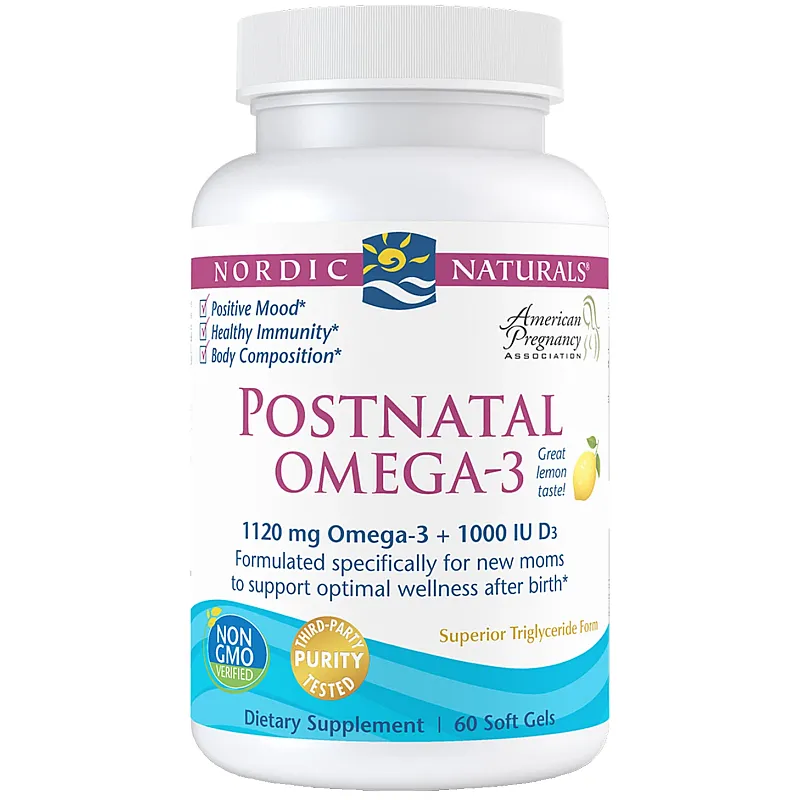- Supplement composed specifically for women after childbirth
- Omega 3 from wild caught marine fish
- 1000 IU of vitamin D3 per daily serving
- Tested for purity of composition
- Gluten-free and GMO-free product
Nordic Naturals Postnital Omega-3 is a supplement specifically formulated for women during the postpartum period. It provides omega 3 fatty acids from trusted sources along with vitamin D.
The first months after childbirth are an extremely important period for women. It's a time when young moms' bodies are slowly recovering from a demanding pregnancy. However, these days are not only about recovery, but also about the new challenge of breastfeeding a newborn baby. Hence, nutrition and supplementation during the postpartum period are extremely important. Nordic Naturals, a manufacturer of premium supplements, has decided to respond to the special nutritional and supplementation needs of young mothers.
The core of the product consists of omega 3 fatty acids, known for their health-promoting properties. As befits this class of supplement, they are extracted from wild caught sardines and anchovies, which guarantees the high quality of the raw material. This is also confirmed by the FOS (Friends of the Sea) certification. Eicosapentaenoic (EPA) and docosahexaenoic (DHA) acids contribute to the proper functioning of the heart; in addition, DHA acid contributes to the maintenance of normal brain function. Significantly from the point of view of breastfeeding moms, there are sources indicating the beneficial effects of an adequate supply of Omega 3 acids in the diet of breastfeeding moms on the development of visual acuity and bone tissue in newborns.
The second of the ingredients included in the formula is vitamin D. It helps in the proper functioning of the immune system, which is an important support for the body stressed during pregnancy. From the point of view of breastfeeding, it is important to note that increasing the supply of vitamin D in the diet of a nursing mother can increase its level in milk. The international organization "Academy of Breastfeeding Medicine" recommends cholecalciferol supplementation from the first days after delivery for at least a year.
From the perspective of breastfeeding women, the purity of the supplements taken is also extremely important. Therefore, the product is regularly tested by independent institutions, and certificates of analysis are available on the manufacturer's website. The composition of the product is also GMO-free.
Another important fact is the absence of a "fishy" aftertaste, characteristic of some supplements with Omega 3 acids derived from fish. The product has a pleasant lemon aroma.
In conclusion, Nordic Naturals Postnatal Omega-3 is a high-quality product composed specifically for women just after childbirth, providing omega 3 acids and vitamin D from the highest quality sources.
